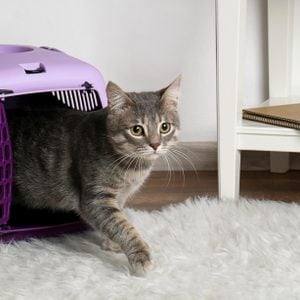The 10 Best Airlines to Fly with Your Pets
Updated: Feb. 01, 2024
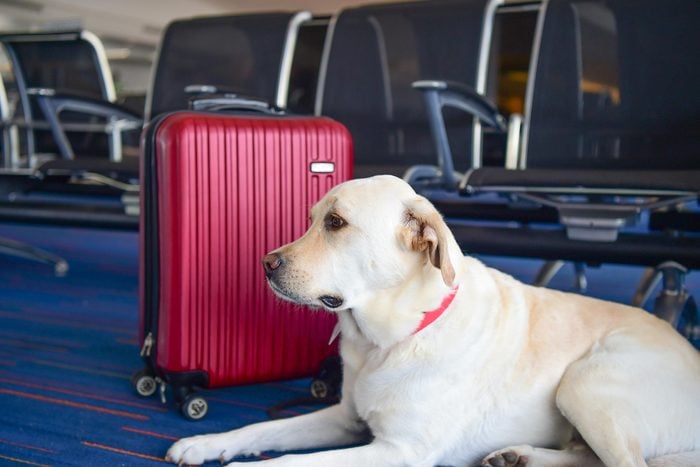
Have fur, will travel. Here's everything you need to know about the most pet-friendly airlines.
Our editors and experts handpick every product we feature. We may earn a commission from your purchases.
A lot has changed since we’ve last been able to travel freely and frequently—COVID-19 restrictions have had a major impact on air travel, and many of us have adopted pets to keep us company during quarantine. With the resurgence of travel, if you’re thinking of traveling with your pet, finding the most pet-friendly airlines will be crucial to making sure your trip goes off without a hitch (and without any fur flying).
Ready for your pet-cation? Before you go, take a look at pet-friendly hotels (and hotel trends), rules to follow next time you fly, and the difference between booking hotels vs. Airbnbs.
Is it safe to travel with pets?
Just as it is for humans, air travel can be stressful for animals and can take a toll on their mental and physical health. Before traveling, take your pet to your vet (dog carriers/cat carriers are a requisite for a hassle-free trip) to have him examined. Illness, age, or even temperament will affect how your pet travels and whether it will be a positive (or neutral) experience. You’ll want to be sure your pet has all the proper vaccinations and necessary medications, along with his regular food to minimize digestive issues.
The American Kennel Club notes that anxiety or temperature increases may exacerbate breathing problems for some dog breeds with respiratory challenges. It’s also recommended that certain breeds don’t travel by air, so you may consider taking a train, bus, or car.
What to consider when flying with pets
Start early, because while you may find unbelievably cheap airfare for yourself, the pet fees could be twice as much. When getting ready to book a trip, it’s important to note that many airlines don’t allow pets at all. If they do, they will very likely charge a fee to have Fido on board. In addition, there are often hard-and-fast rules about pets in the cabin vs. cargo, and even how many pets you can take onboard. There are also certain times of the year (like the holiday season) when airlines will pause on allowing pets onboard at all.
Jamie Freyer, DVM, veterinarian at Veterinarians.org, notes that airlines are placing more restrictions on pets than ever before, and that fewer airlines are accepting pets in the cargo hold. “Though they will still allow pets in the cabin, this only works for dogs small enough to fit comfortably under the seat in front of you, which means for a lot of pets, flying will not be an option,” Dr. Freyer says.
Above all else, make sure to check out the airline’s safety measures. Caroline Teel of SmarterTravel recommends asking these questions to see if it really is the most pet-friendly airline:
- What will they do if there’s a flight delay?
- How do they make sure animals are loaded onto the correct plane?
- Where will the animals be kept before being loaded onto the plane?
- Is that space climate-controlled?
- Will pet handlers be able to let your dogs out for a relief stop or exercise before boarding?
Additionally, when in the airport, some pets will need to run around or use the litter box before the flight. Make sure to check the airport’s website beforehand for pet relief areas, because many don’t have them.
The following refers to pets, not service animals or emotional support animals, which may have different guidelines. For info on medicating your pet or ensuring he has all he needs for the trip, contact your veterinarian.
1. Alaska Airlines
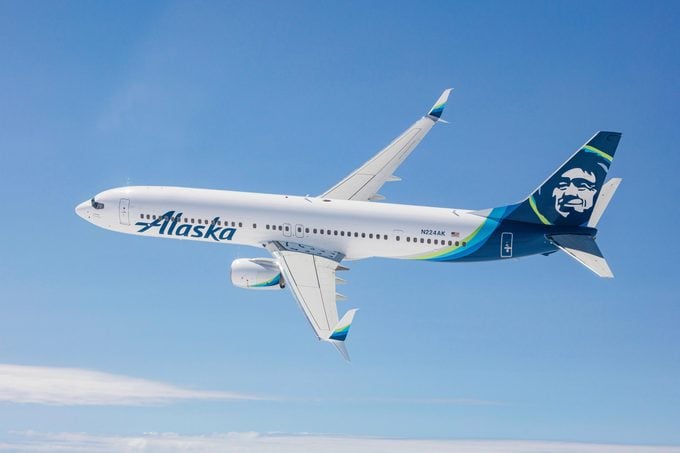
In addition to cats and dogs, rabbits and household birds can also travel aboard Alaska Airlines. If you’re checking your pet, then ferrets, hamsters, non-poisonous reptiles, pot-bellied pigs, and tropical fish are also allowed on board. Note that during the busy holiday season, Alaska has an embargo on pets traveling in cargo, so some pets will have to celebrate back at home. Because of their cargo policies, transparent information, and fairly low cost, Alaska Airlines comes in at No. 1.
Cost per pet
Travelers must pay $100 per carrier each way, in both baggage and cabin. If the fight is leaving from Canada, the price goes up to $105.
Pets in cabin
Your pet carrier will count toward your carry-on bag allowance, so pack well! The carrier can be no larger than 17 inches by 11 inches by 7.5 inches. Customers can travel with a maximum of two pet carriers (only when the adjacent seat is also purchased by the same customer). Up to two pets of the same species and similar size can travel in the same carrier, as long as they fit comfortably. Pets need to stay in their carrier at all times, including during boarding and deplaning. Dogs and cats must be at least eight weeks old to board. P.S. This inflatable dog crate will help you save space when traveling with pets.
Pets in cargo
Your pet can go in cargo, but you’ll need to show a valid health certificate for each animal. No more than one dog or one cat can be transported in the same kennel if they’re going in cargo. During check-in, travelers will be asked to complete a Pet Check to certify that they’ve offered their pet food and water prior to the flight. If you have a connecting flight with a wait time of more than four hours, you’ll need to request access to the animal in the connecting city and re-check the animal after providing food and water. If there are any delays and your pet needs to be placed in a kennel facility until a flight can be arranged, costs can add up, and they’ll be the responsibility of the owner.
2. American Airlines
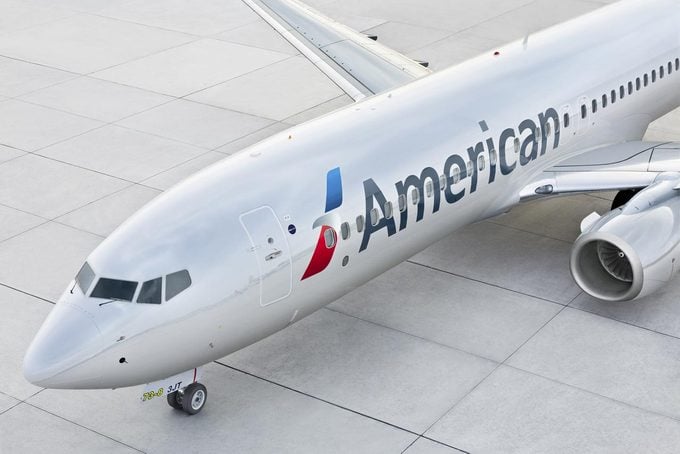
American Airlines has great safety procedures in place, but unfortunately they don’t allow pets to be checked as cargo, unless it’s by an active service member on assignment (this could change in a post-COVID world). Only cats and dogs are permitted, and if you’re flying with a big breed, this is probably not the airline for you.
Cost per pet
The price for traveling with a dog or cat is $125 per kennel for domestic travel, and $200 if you’re going abroad, although right now they’re only accepting pets from the U.S. due to COVID-19 restrictions.
Pets in cabin
Your pet counts as one of your personal items, and he must stay in his kennel under the seat in front of you for the entire flight. Hard-sided kennels cannot exceed 19 inches by 13 inches by 9 inches for mainline flights, or 16 inches by 12 inches by 8 inches for regional flights. Soft-sided kennels should be 18 inches by 11 inches by 11 inches maximum. If you’re flying first class, your pet will be placed in a dedicated animal compartment in the front of the plane during takeoff and landing. American can accept only five to seven kennels on board each flight, so be sure to book early.
Pets in cargo
Only animals traveling with U.S. State Department Military or Foreign Service on active duty can travel in cargo. If your pet is too large to fit in an under-seat carrier, he will need to stay home.
3. Delta Airlines
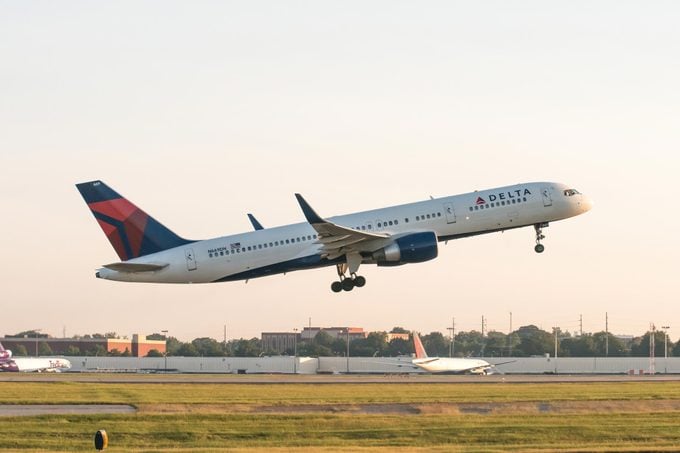
Delta’s pet policy makes Delta seem like the most pet-friendly airline (encouraging travelers to “take off with your favorite friend, even if they have fur,” which is adorable). COVID restrictions have changed Delta’s policies a bit, so dogs are temporarily suspended from arriving in the U.S. from other countries. They also have not been taking pets in cargo since April 2020—but they have been taking small pets in the cabin.
Cost per pet
Delta charges $95 each way, which is one of the cheapest options available. International pet travel will cost $200, but pets are not permitted in the cabin on flights to or from Hawaii, the U.K., Australia, and a few other countries.
Pets in cabin
Small dogs, cats, and birds can travel for a one-way fee, which you’ll pay at check-in. They must be able to fit in a carrier that fits underneath the seat in front of you (18 inches by 11 inches by 11 inches or smaller). Your pet must remain in that carrier at all times and be more than 10 weeks old. Only one pet is permitted per kennel typically, but two pets of the same breed and size may be allowed to travel in one kennel if they’re between 10 weeks and six months old.
Again, your fur baby’s carrier will count as a carry-on bag. Delta has additional seating rules for people traveling with pets: Passengers carrying on pets are not permitted to sit in bulkhead seats, emergency exit rows, flat-bed seats, and certain rows on the A330-200 or B757-200 aircrafts. Pets are taken on a first come, first served basis, so book early and have your kennel dimensions handy.
Pets in cargo
If your pet can’t fit underneath your seat, you’ll need to “ship” the animal with a special service from their Delta Cargo program. Pets cannot be booked until 14 days prior to the flight, and they must be dropped off at least three hours before departure. A health certificate must be provided, and Delta does not recommend traveling with older or snub-nosed dogs. If your pet needs in-flight feeding, you need to provide the food and directions (they’ll feed your pet, which is rare!). Unfortunately, the airline has not accepted any pets to travel via cargo since April 2020.
4. Hawaiian Air
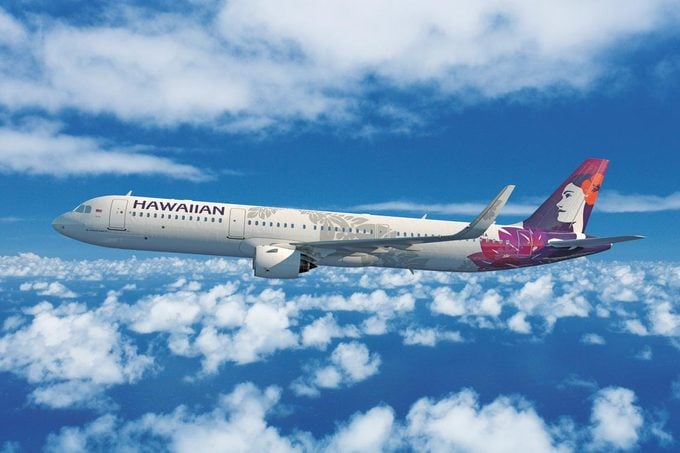
Hawaiian Air accepts dogs, cats, and household birds, but only dogs and cats are allowed to be carried on. Health certificates are required for dogs in both the cabin and cargo.
Cost per pet
For pets traveling in the cabin, the cost is $125 each way. If your pet is larger and is traveling in cargo or checked baggage, that price goes up to $225 each way.
Pets in cabin
Dogs and cats are permitted on inter-island flights within Hawaii, and on flights between Hawaii and North America, with the exception of flights to/from JFK, MCO, BOS, or AUS airports. Pets must be in an approved carrier that fits under the seat in front of you.
Pets in cargo
The pet and kennel must not weight more than a combined 70 pounds (so you’ll probably need to leave your Bernese mountain dog at home). Pets may also be prohibited in cargo due to hot weather, so be sure to plan ahead if you’re traveling during summer months.
5. JetBlue
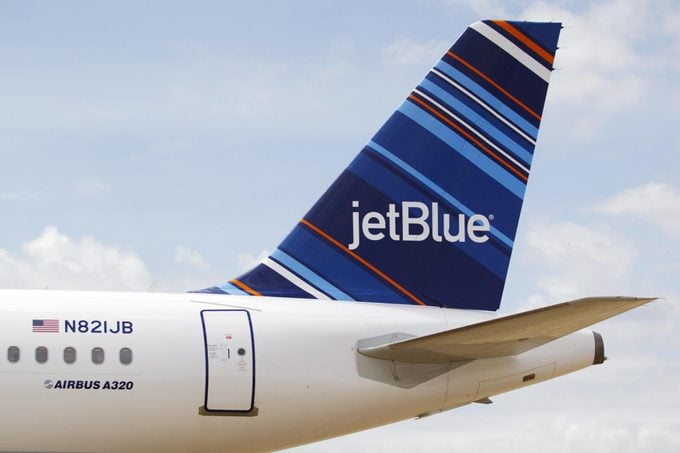
When you check in with your pet, you’ll receive a JetPaws tag to put on your carrier. Your pet will need to stay in his carrier at all times in the airport and on the airplane. JetBlue even has a limited quantity of pet carriers you can purchase at the airport ticket counter for $55. Pets are not allowed in Mint (JetBlue’s business class), but for TrueBlue members, traveling with a pet can earn you 300 extra TrueBlue points per flight.
Cost per pet
The pet fee is $125 per pet each way. Only six pets are allowed on each flight.
Pets in cabin
The weight of your pet and the carrier cannot exceed 20 pounds to fly in the cabin. The carrier itself cannot be larger than 17 inches by 12.5 inches by 8.5 inches, and only one pet is allowed per carrier. The carrier must be placed below the seat in front of you for takeoff and landing, but you can keep your friend (in their carrier) on your lap during the flight—a big departure from other pet-friendly airlines.
Pets in cargo
JetBlue does not allow pets to be checked in as cargo, so if your animal weighs more than 20 pounds, you’re out of luck.
6. Allegiant Air
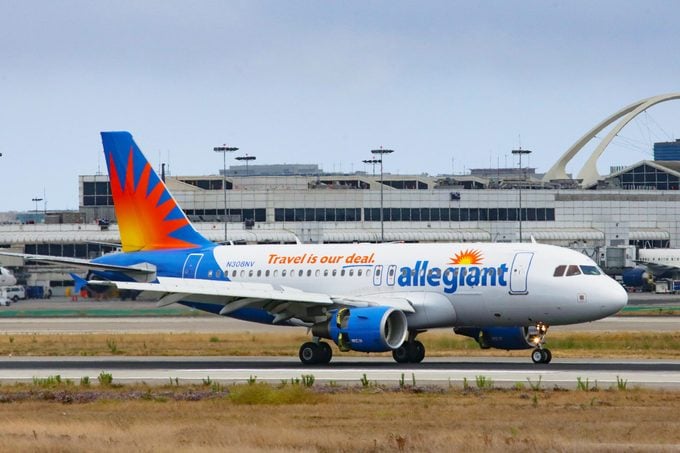
Allegiant allow smalls dogs and cats in the aircraft cabin if traveling within the 48 contiguous United States (including Washington, DC, but not Alaska or Hawaii). Allegiant also allows minors (15 years and older) traveling alone to bring a pet onboard.
Cost per pet
Allegiant ranks as the lowest-fee airline, at just $50 per flight per carrier, which helps it rank as one of the best airlines for pets. Each traveler is allowed one carrier total, but that carrier can hold two pets if they fit comfortably. This fee is non-refundable.
Pets in cabin
Allegiant has many of the same rules most airlines have: The pet must fit comfortably in the carrier, which must fit under the seat in front of you. They strongly suggest a soft-sided carrier, no larger than 9 inches by 16 inches by 19 inches. Pets cannot hang out in exit rows or in the bulkhead.
Pets in cargo
Allegiant does not transport animals in cargo.
7. Southwest Airlines
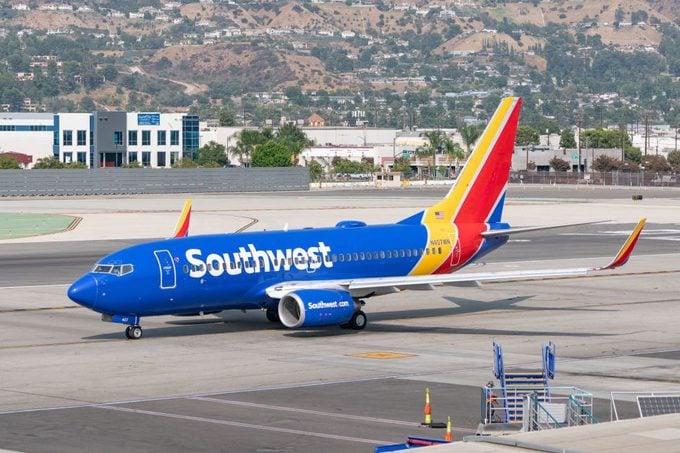
Pets on Southwest are accepted on a first come, first served basis and are not permitted to travel internationally. Only six pets are allowed per flight, with a limit of one carrier per paying customer—something to note if you have a few animals—though they do allow more than one animal per carrier if they can fit safely. This will count as one of your carry-on items. Southwest reserves the right to deny boarding if the pet is growling, biting, urinating, or scratching.
Cost per pet
Pets on Southwest travel for $95 per carrier, each way. These fees are refundable, so if you cancel your reservation, you can get this money back. Southwest also sells their own approved pet carriers online for $58.
Pets in cabin
Small vaccinated cats and dogs are allowed onboard in the cabin. Pet carriers must be leak-proof, well ventilated, and no more than 18.5 inches by 8.5 inches by 13.5 inches. Hard- or soft-sided carriers are both acceptable, but passengers must steer clear of exit rows or seats without under-seat storage in front of them.
Pets in cargo
Pets are permitted only in the cabin, not checked as baggage.
8. United Airlines
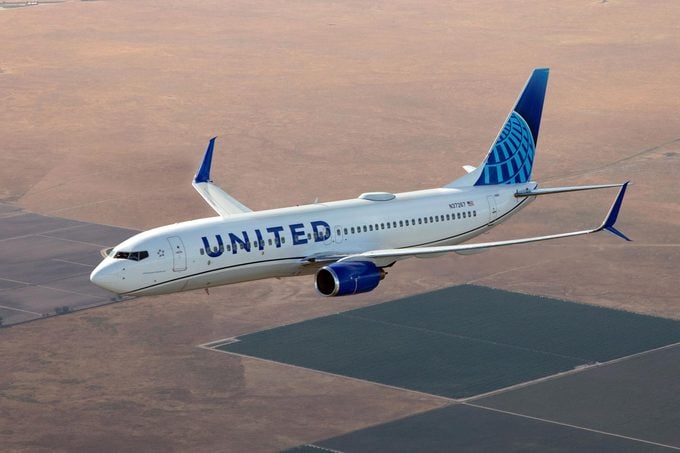
Finally, an airline where you can bring your pet’s kennel on board in addition to your carry-on bag. When you arrive at the airport, United will give you a bright yellow tag to put on your pet’s kennel, and you’ll need to sign a form stating that you understand the airline’s travel requirements. Unfortunately, this is another airline that hasn’t been taking pets as cargo since early 2020, due to COVID restrictions.
Cost per pet
There is a fee of $125 each way, and an additional $125 service fee for each stopover of more than four hours (or 24 hours for international flights).
Pets in cabin
United’s age requirement for pets is two months old for puppies and kittens, or four months old for puppies and kittens traveling internationally. You can bring your cat or dog in a hard carrier (17.5 inches by 12 inches by 7.5 inches), or a soft-sided one (18 inches by 11 inches by 11 inches). Only one pet is allowed per kennel. You can indicate you’ll be traveling with a pet when you book, or add your pet to an existing reservation. Your pet must stay at your feet under the seat in front of you at all times.
Pets in cargo
United can ship cats and dogs using their PetSafe program. Unfortunately, they have not allowed PetSafe reservations since March 2020.
9. Frontier Airlines
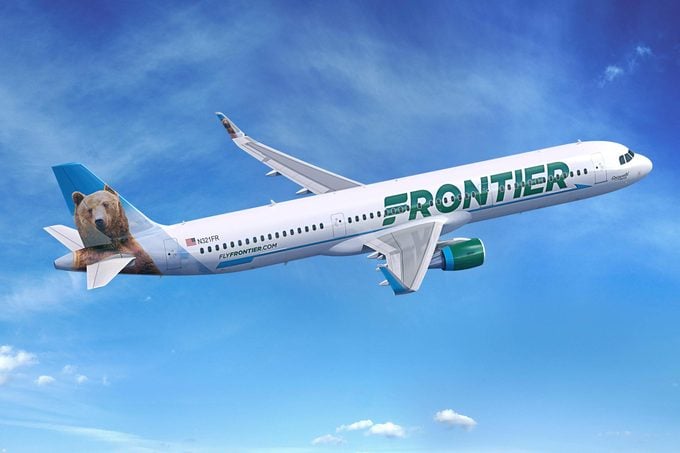
Frontier will fly your cat, dog, hamster, rabbit, bird, or other small animal for under $100, which is pretty great. They do not allow pets as checked baggage, which means any pet that can’t fit in your carry-on can’t fly.
Cost per pet
Frontier’s pet-travel fee comes in at $99 for a one-way trip. You can pay this in advance or when you check in for your flight.
Pets in cabin
Frontier allows a large variety of pets to be carried onboard, but only dogs and cats can be carried on international flights. You can’t sit in the first row or exit row when traveling with your pet, and pets must remain in their carriers at all times. They ask that you don’t provide food or water to your pet while traveling.
Pets in cargo
No pets are allowed in cargo.
10. Spirit Airlines
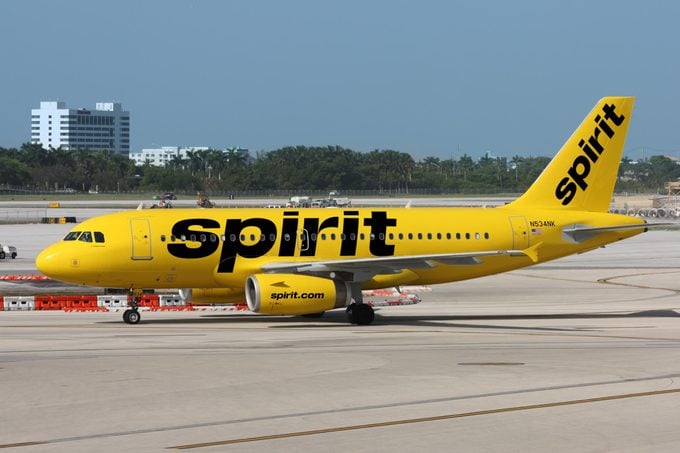
Spirit Airlines is known for their bargain airfare, but your pet’s ticket may cost just as much as your own! This airline only allows for pets in the cabin, and those pets include cats, dogs, small household birds, and small domestic rabbits (but not to Puerto Rico or U.S.V.I.).
Cost per pet
Passengers pay $110 per pet carrier, each way. Spirit allows up to two pets in each carrier, so long as they fit comfortably.
Pets in cabin
Animals must stay in their carrier for the duration of the flight, and the animal has to be “harmless, inoffensive, and odorless.” The combined weight of the pet and carrier cannot exceed 40 pounds, and you’re able to sit anywhere except for the first row and emergency exit rows.
Pets in cargo
Spirit Airlines does not accept pets in cargo. If pets are too large for carry-on, they won’t be able to fly.
What documents do I need for my pet to fly?
Each airline has its own requirements, but many airlines require a valid health certificate issued by your vet. This is more prevalent if you’re flying out of the country with your pet, as domestic flights may not have such a requirement. As a general practice, it’s a good idea to schedule a vet visit for seven to 10 days before your trip. That way, you have up-to-date health information on your pet and can prove they’re caught up on vaccinations.
How can my pet fly for free?
The days of pets flying for free are gone, unfortunately. Today, all major airlines have fees for flying with your furry friend, but these are our recommended options for the best airlines for pets.
What pet gear do I need for flying?
According to the American Kennel Club, you should find a soft or hard carrier that your pet can sit and turn around in without touching the sides. Of course, you’ll need to check your individual airline for size requirements of carry-on and cargo pet carriers, but checking FAA requirements and the Center for Pet Safety will also be helpful. All carriers should be secure, padded, ventilated, and water-resistant.
Written with additional research by Ramsey Qubein
Sources:
- Brandi Hunter-Munden, VP of Communications at the American Kennel Club
- Caroline Teel, Managing Editor at SmarterTravel Media
- Sally French, travel expert at NerdWallet
- Jamie Freyer, DVM, veterinarian at Veterinarians.org
- Alaska Airlines: Booking pet travel
- American Airlines: Pets
- Delta Airlines: Pet travel on Delta
- Hawaiian Airlines: Traveling with animals
- JetBlue Airlines: Traveling with pets
- Allegiant Air: Traveling with pets
- Southwest Airlines: Traveling with pets
- United Airlines: Travel for animals
- Frontier Airlines: Families & pets
- Spirit Airlines: Does Spirit Airlines allow pets onboard?

